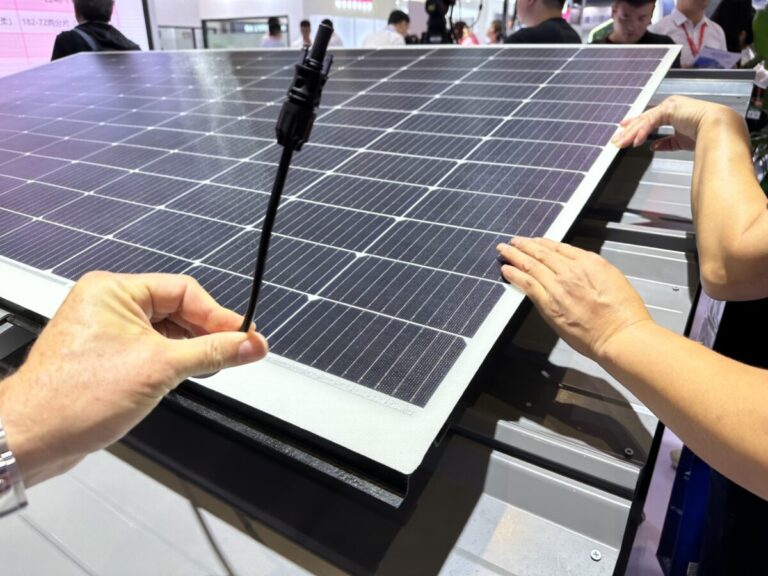The new provisions aim to reduce overcapacity in the market while selecting the most efficient technologies and products.
China’s Ministry of Industry and Information Technology (MIIT) has submitted a revision of the policy on “Normative Conditions for the Photovoltaic Manufacturing Industry” for public consultation.
The policy outlines the requirements for new construction and expansion projects across all PV manufacturing segments, including polysilicon, blocks, wafers, solar cells, modules and inverters.
The requirements cover the ratios of investment sources, production layout, technological processes, energy consumption, resource use, smart and green production, environmental protection, quality management, intellectual property protection and occupational safety.
Initially released by MIIT in 2013, additional revisions followed in 2015, 2018 and 2021.
One important amendment increases the minimum capital ratio for new construction and expansion projects in the photovoltaic sector to 30%. Previously, this requirement was 30% for polysilicon production projects and 20% for other photovoltaic production projects.
Industry analysts said this adjustment is a measure to curb investment impulses due to overcapacity concerns in the PV industry, thereby reducing corporate debt and leverage ratios.
The revised standards also improve efficiency requirements for solar cells and modules. The existing capacity should achieve a photoelectric conversion efficiency of not less than 21.4%, 23.2% and 25% for multicrystalline silicon cells, p-type monocrystalline silicon cells and n-type monocrystalline silicon cells, respectively. The efficiency requirements for multicrystalline silicon modules, p-type monocrystalline silicon modules and n-type monocrystalline silicon modules are set at as high as 19.4%, 21.2% and 22.3%.
The 2021 version, on the other hand, set efficiency requirements at as much as 19% for multicrystalline silicon cells and 22.5% for monocrystalline silicon cells, and as much as 17% and 19.6% for multicrystalline silicon modules and monocrystalline silicon modules, respectively.
The revised document also sets requirements for the degradation rate of photovoltaic modules and the level of electricity costs for photovoltaic production projects. For example, degradation rates for p-type crystalline silicon modules should not exceed 2% in the first year, while subsequent annual rates should not exceed 0.55%, and a cumulative 15% over 25 years. Similarly, n-type crystalline silicon modules are capped at 1% in the first year, 0.4% per year thereafter, and 11% over 25 years. In addition, the average total electricity consumption for cell projects must be less than 50,000 kWh/MW, and less than 70,000 kWh/MW for module projects.
Energy consumption standards have also been lowered across multiple production phases, including polysilicon, ingots, wafers, crystalline silicon cells and modules. Previous requirements specified a reduction in specific energy consumption to less than 60 kWh/kg for existing polysilicon projects and extended energy consumption to less than 80 kWh/kg. Under the new standards, these figures have been adjusted to 46 kWh/kg and 60 kWh/kg for existing projects, and 44 kWh/kg and 57 kWh/kg for new construction and expansion projects, respectively.
The new standards also increase water consumption requirements for photovoltaic production projects. For example, the water recycling rate for polysilicon projects has been adjusted from a minimum of 95% to 98%, and water consumption for wafer projects should be less than 900 tons per million pieces, compared to the previous requirement of 1,300 tons per million pieces. .
Industry observers say these higher standards will facilitate the elimination of outdated manufacturing capabilities.
This content is copyrighted and may not be reused. If you would like to collaborate with us and reuse some of our content, please contact: editors@pv-magazine.com.


